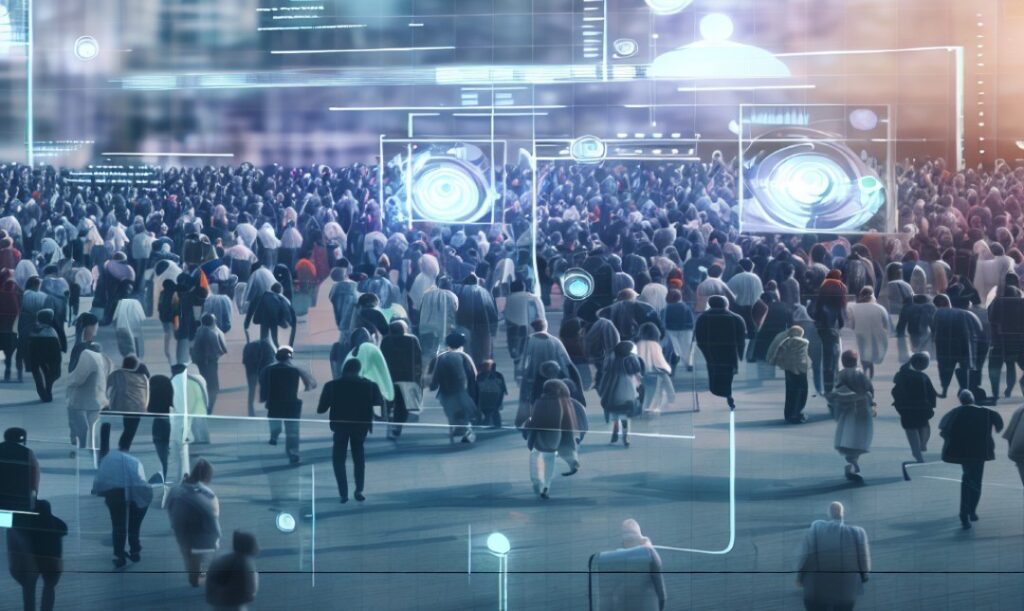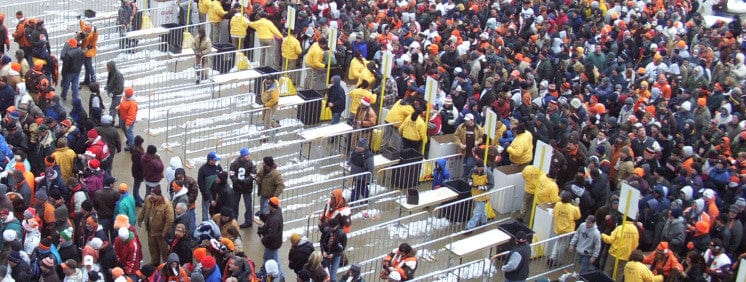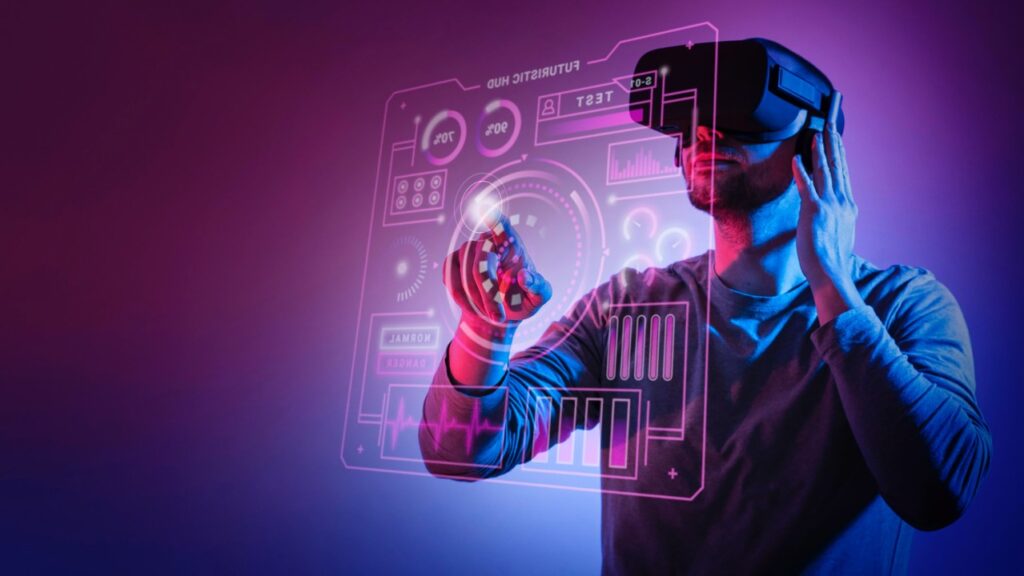Navigating the Human Tide: Predictive Analysis and the Future of Crowd Management

Crowd management has always been a critical aspect of public safety and urban planning, ensuring that large gatherings—whether at concerts, sporting events, religious pilgrimages, or city streets—remain safe and orderly. The challenge lies in predicting and managing human movement in a way that prevents overcrowding, chaos, and potential disasters such as stampedes. Traditional methods of crowd control, such as physical barriers and security personnel, are no longer sufficient to handle the complexities of modern-day mass gatherings.
This is where predictive analysis comes into play. By leveraging artificial intelligence, real-time data collection, and machine learning algorithms, authorities can now anticipate and prevent potential hazards before they occur. This proactive approach to crowd management not only enhances public safety but also improves the overall experience for attendees and commuters by minimizing congestion and optimizing movement flows.
Predictive analysis in crowd management involves collecting vast amounts of data from various sources, such as surveillance cameras, mobile tracking, weather reports, and IoT-enabled sensors. By processing and analyzing this data, AI-driven systems can identify emerging patterns, detect anomalies, and provide actionable insights in real time. This allows decision-makers to implement preventive measures, such as rerouting foot traffic, adjusting transport schedules, or deploying security personnel in high-risk areas before issues escalate.
In this blog, we will explore the various facets of predictive analytics in crowd management, including AI-powered crowd control, wearable technology, digital twins, IoT integration, and the incorporation of behavioral psychology in predictive models. Additionally, we will discuss the ethical considerations surrounding data privacy and the role of human oversight in ensuring that technology is used responsibly.
By understanding and embracing these advancements, we can move towards a future where public gatherings, urban mobility, and mass transit systems operate more efficiently and safely. The integration of predictive analysis into crowd management is not just about improving logistics—it’s about safeguarding lives and creating more resilient, intelligent spaces for people to navigate and interact within.
The Challenge of Managing Crowds

The Nature of Crowds: A Delicate Balance
Crowds aren’t just about numbers; they’re about movement, psychology, and sometimes, even emotions. A peaceful protest can remain orderly for hours and then suddenly spiral into panic. A sporting event can go smoothly until one team wins, triggering a euphoric rush toward the field. In such situations, small triggers can lead to large-scale consequences—and often, there’s little time to react.
Real-World Tragedies: When Crowds Turn Deadly
History has shown us that poorly managed crowds can lead to devastating outcomes. Here are just a few examples:
2015 Hajj Stampede, Saudi Arabia: Over 2,000 pilgrims lost their lives in a deadly crush due to overcrowding and mismanaged pedestrian flow.
2021 Astroworld Festival, USA: A tragic crowd surge led to the deaths of 10 concertgoers, with many more injured due to compression asphyxia.
2022 Seoul Halloween Crowd Crush: A festive night turned into a nightmare when a narrow alley became a death trap, claiming over 150 lives
The Power of Predictive Analytics in Crowd Management

Predictive analysis is revolutionizing crowd management by shifting the approach from reactive to proactive. But what does this mean in practice? Let’s break it down:
1. AI and Machine Learning: The Digital Watchtower
Imagine having a system that learns from past events to predict what might happen next. That’s exactly what artificial intelligence (AI) and machine learning bring to the table. These technologies analyze massive amounts of data, including:
Historical event data (e.g., past crowd surges, peak congestion times).
Real-time movement patterns (how people are moving within a space).
Social media trends (sentiment analysis—detecting excitement, panic, or agitation in the crowd).
AI then processes this information to anticipate potential risks before they become critical. For example, if a system detects an unusual density buildup in a festival area, it can alert security teams to redirect people before things get out of hand.
2. Real-Time Data Collection: Eyes Everywhere
Technology now allows us to monitor crowds in real time using:
CCTV cameras with AI-powered detection to analyze movement patterns.
Drones and thermal imaging to identify high-density areas from above.
Mobile data tracking that anonymously monitors where large groups are forming.
By continuously collecting data, these tools help authorities make split-second decisions that can prevent dangerous overcrowding or even direct emergency responders to critical areas faster.
3. Simulation Models: Testing Scenarios Before They Happen
One of the most fascinating applications of predictive analysis is crowd simulation modeling.
Think of it like a video game version of reality, where urban planners can simulate how crowds might behave under different conditions.
These “digital twins” of real-world environments allow planners to test evacuation plans, optimize crowd flow, and identify bottlenecks before an event even takes place.
For instance, ahead of the Tokyo Olympics, AI simulations helped design efficient pedestrian pathways to minimize congestion during peak hours.
4. Behavioral Psychology: Understanding the Human Factor
At its core, predictive analysis isn’t just about numbers—it’s about people. Understanding human psychology helps in designing safer spaces and better crowd control strategies.
People tend to follow the crowd (herd behavior), even if it’s not the best route.
Emotions influence movement—panic can spread like wildfire in a crowded space.
Personal space matters—if a space feels too cramped, anxiety rises, and movements become unpredictable.
By integrating psychological insights, predictive systems can guide people subtly—for example, by using smart signage, real-time notifications, or even scent-based cues to nudge crowd movement naturally.
Where This is Already Making a Difference
Predictive analytics isn’t just a futuristic idea—it’s already in action:
1. Smart Cities and Transportation Hubs
In London’s Underground, AI predicts passenger flow and dynamically adjusts train frequency.
Tokyo’s train stations use AI to anticipate peak hours and deploy additional staff accordingly.
Airports use real-time crowd monitoring to minimize long security lines.
2. Sports and Entertainment Venues
Wembley Stadium (UK) uses AI to track movement in concourses and prevent bottlenecks.
Disney Parks employ predictive models to manage ride queues and foot traffic, ensuring a smoother experience for visitors.
3. Disaster and Emergency Response
Fire evacuations in skyscrapers now use AI simulations to optimize exit strategies.
Earthquake-prone cities like San Francisco use predictive crowd modeling to plan for mass evacuations.
Challenges and Ethical Considerations
As powerful as predictive analytics is, it also raises some concerns:
Privacy Issues – Tracking movements through phones or facial recognition raises ethical concerns about surveillance.
Over-Reliance on AI – Machines can predict, but humans must still be in control to make judgment calls.
Inclusivity – Crowd management must consider people with disabilities, elderly individuals, and those who need additional support.
The key is to balance innovation with responsibility—using technology to enhance safety without infringing on personal rights.
The Future: Smarter, Safer Crowds
As cities grow and events become larger, predictive analysis will play an even bigger role in shaping the way we manage crowds. In the near future, we may see:
Wearable devices that alert individuals when they’re entering an overcrowded zone.
AI-driven evacuation plans that adapt in real time.
Holographic signage and virtual assistants guiding people effortlessly through dense areas.
Crowds aren’t going anywhere—but with smarter, data-driven solutions, we can navigate them with greater safety, efficiency, and peace of mind.
for more details contact:grow@simbi.in
Frequently
Asked Questions
Predictive analysis in crowd management is like having a crystal ball, but powered by data and AI instead of magic. It helps us anticipate how people will move, where congestion might form, and what potential risks could arise in large gatherings.
Using data from past events, real-time sensors, and human behavior patterns, AI can predict possible crowd-related issues before they happen, allowing authorities to take proactive measures—like adjusting entry points, opening new exits, or sending alerts to event-goers.
Think of it as the Waze or Google Maps for human movement, except it’s not just about avoiding traffic—it’s about preventing chaos, injuries, and tragedies.
AI predicts crowd behavior by analyzing patterns—just like how weather apps predict rain by studying past climate data and current conditions.
Here’s how it works in simple terms:
Data Collection – Cameras, mobile signals, drones, and sensors track crowd movement, density, and speed.
Pattern Recognition – AI looks at previous crowd behaviors in similar situations (like how people move at festivals vs. train stations).
Real-Time Monitoring – It continuously analyzes incoming data, looking for warning signs of congestion, bottlenecks, or panic situations.
Alerts & Action – If the system detects a potential problem, it can send real-time alerts to event organizers, security teams, or even the crowd itself through apps and notifications.
Predictive analytics isn’t just some futuristic dream—it’s already being used in many places around the world!
✔ Sports Stadiums & Concert Venues – AI monitors foot traffic in and out of stadiums like Wembley or the Super Bowl to prevent stampedes and speed up security checks.
✔ Airports & Subway Stations – Tokyo’s train stations use AI to predict rush-hour congestion and adjust train schedules accordingly.
✔ Public Events & Festivals – The Hajj pilgrimage in Saudi Arabia now uses AI-powered surveillance to track pilgrim movement and prevent overcrowding.
✔ Theme Parks & Shopping Malls – Disney uses crowd data to direct visitors to less crowded areas, improving visitor experience and safety.
✔ Emergency Evacuations – AI helps cities like San Francisco plan evacuation routes for earthquakes and fires, ensuring people move safely and efficiently.
If you’ve ever been in a train station, concert, or shopping mall where everything just seemed to “flow” well, chances are predictive analytics was at work behind the scenes!
While it can’t eliminate all risks, predictive analytics greatly reduces the chances of deadly crowd incidents by providing early warnings and actionable insights.
Here’s how it helps prevent crowd disasters:
Identifying High-Risk Areas: AI spots where people are gathering too densely and alerts organizers.
Redirecting Crowds in Real Time: Systems can guide people to alternate routes before an area gets dangerously full.
Early Panic Detection: AI can detect signs of distress—like sudden erratic movement or increased noise levels—and alert security to intervene before panic spreads.
Smart Exit Management: In emergencies, AI helps direct people to the safest rather than just the nearest exit, preventing deadly bottlenecks.
So, while human decisions still play a crucial role, predictive analysis acts as an extra set of eyes and a fast-thinking assistant, ensuring crowds move safely.
Most modern crowd monitoring doesn’t track individual identities—it focuses on movement patterns, density, and behavior. Many systems rely on:
✔ Anonymized mobile data (it tracks "how many" people are in an area, not "who" they are).
✔ Thermal cameras instead of facial recognition.
✔ AI-powered crowd counters that only analyze shapes and movements, not personal details.
That said, there are concerns about cities or organizations using this data irresponsibly. This is why many governments are introducing strict privacy regulations to ensure:
Data is anonymized and not used for personal tracking.
AI is used ethically, with proper oversight.
Surveillance is limited to security needs and not used to monitor people unnecessarily.
The key is finding the balance—using AI to keep crowds safe without compromising individual freedoms.
